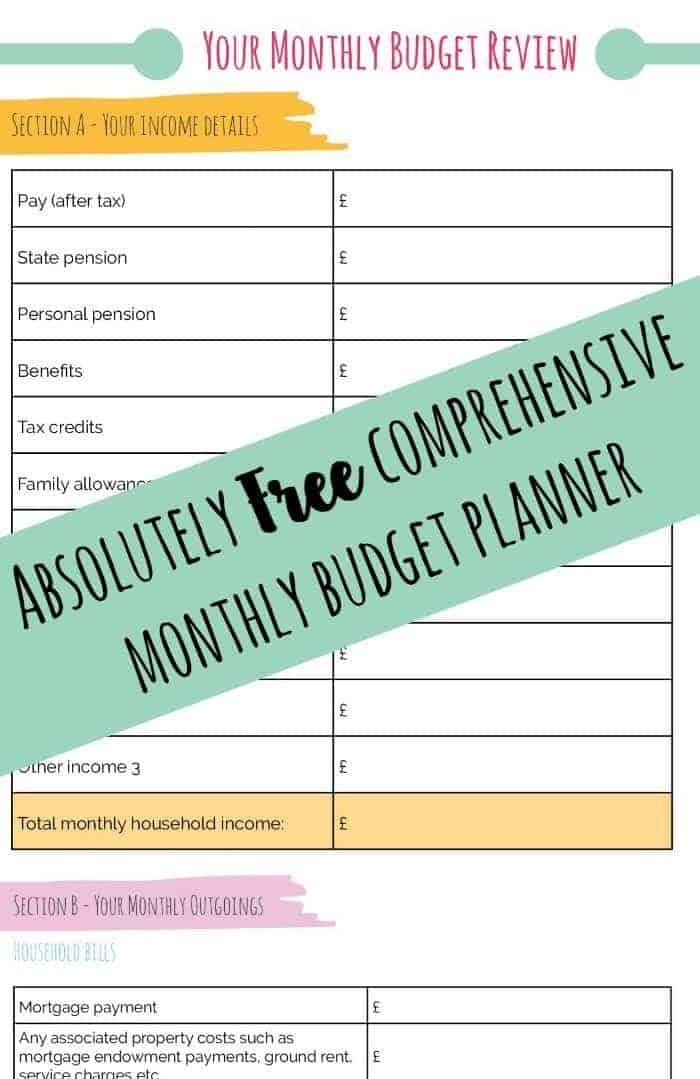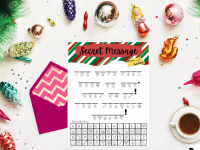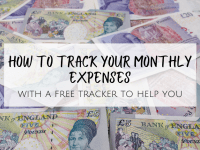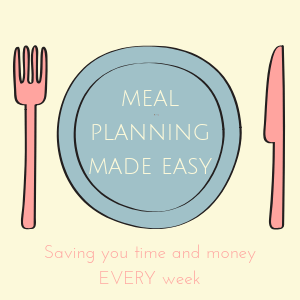This free monthly budget planner is just what you need to get your finances in order! There are two versions for you to choose from – a pretty colourful one or a more grown-up serious version with no colour in sight. 😂
I’ve written lots of posts about how important it is to know exactly what your monthly budget because let’s face it, it’s difficult to know where to save money if you don’t know exactly where it’s been spent isn’t it? Filling in all of your income and expenditure on this form (as long as you do it honestly) will help you see where you can save money and where you have a little extra to play with.
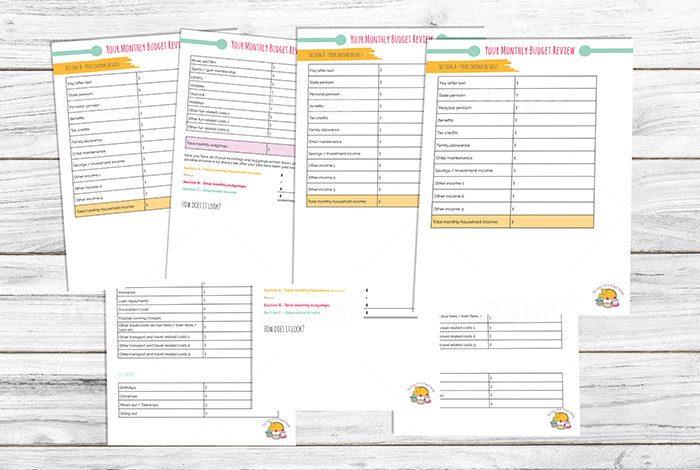
I first included a printable monthly budget planner on here not long after I started blogging and to this day, I can see that lots of you follow the link to my original version over on Google Docs every single day. The link for that is below if you’d prefer to print out the Google docs version but I’ve also made a prettier version which looks much better when you print it out and it’s definitely my preferred option when I re-do my monthly budget!
How to get your free monthly budget planner
So if you want the pretty monthly budget planner version then just click here which will take you to the link to it. If you want the plain old boring version (:-)) then you can hit this link to go to Google Docs and get that one
<<Get the pretty version of my free monthly budget planner here>>
<<Get the grown-up version of my free monthly budget planner here>>
Don’t forget! If you miss things off then your monthly budget isn’t going to be accurate which could cause problems if you’re spending what you think you have available.
How to use your free monthly budget planner
Once you’ve decided which version of the monthly budget planner to use, print it out and take some time to complete it making sure that you don’t miss anything from your income or expenditure categories. The planner is broken down into sections that should remind you where you might have missed something but it’s well worth sitting down with your last three months worth of bank statements to make sure that you capture everything.
When it’s all down on paper, it’s a simple case of subtracting your outgoings from the money you have coming in to see how much you have leftover each month.
If the amount on paper is less than you actually have in reality – that means you’ve either missed some things off, haven’t been completely honest or haven’t counted everything that counts. For example, if you buy a coffee every day on your way to work then it’s a regular expenditure so either cut back (take your own) or include it in your budget. The same applies to anything you regularly spend on whether it feels like it should be part of a budget or now.
I bet your food spend is less than in reality is too – if you know you often pop to the shop on the way home from work for a top-up shop but don’t count it as it’s only ever a couple of bits then you should be adding in extra to account for that.
I’d recommend keeping a spending diary (basically a list of EVERYTHING you buy for a month to see what it is that you’re not seeing and then reassess at the end of that month.
What to do once you’ve completed your monthly budget planner
No matter what the outcome of your budget planning, whether you have money left over each month or you don’t, in all cases you should be looking to see where you can shave some pounds from your outgoings by asking yourself the following questions:
- Are you on the best deals for everything?
- Do you always shop around before renewals?
- Are you paying for things you don’t use?
- Are there cheaper alternatives out there?
- Do you spend more than you need to? Have a read of this post for some ideas on how to stop spending.
If you’re in the negative that means that on paper you don’t have enough coming in and you need to do all of the steps above to make your budget as healthy as you can but also consider reaching out to the Citizens Advice Bureau or Stepchange for some help and guidance before it gets worse. They can help with free debt advice and will be able to work with you to look at your finances in detail to provide some tailored advice. You can also look to see if there are ways to can supplement your income with a couple of side hustles.
If you’re lucky enough to have money left over then think about what you’re going to do with it. I’m too much of a ‘Life’s too short’ kind of person to be sensible with all of my spare money so I spread mine over a couple of treats here and there (some bigger than others) and some more grown-up things like investing in shares and overpaying my mortgage.
I also have a full financial planner that you can have a look at and print out if you think it will work for you – it’s basically a full year’s planner to help you manage and keep track of your finances all year round. You can find it here if you fancy a look.
Once you’ve completed the free monthly budget planner, have a look around the rest of the site for money-saving tips!
Don’t miss out on future posts like this – receive updates directly to your inbox by email by adding your email address here and hitting subscribe. You can also follow me on Twitter or BlogLovin and I’d love to see you over on my Facebook page and on Instagram. If you’re interested, you can find out more about me here and while I’ve got your attention, if you’re wondering why some of my posts lately are a little bit less frugal then have a read of this post. 😉
Do your future self a favour – Pin this free monthly budget planner for later:

